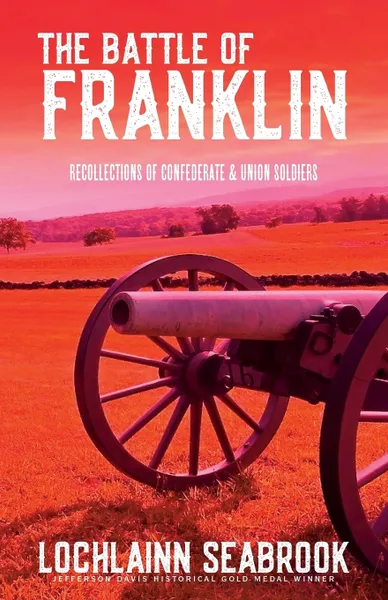The Battle of Franklin. Recollections of Confederate and Union Soldiers
Автор: Lochlainn Seabrook
2018
Переплёт: Мягкая обложка, 150 страниц
Категория: Научная литература
ISBN: 9781943737758
📓 Yankees claimed they won the Battle of Franklin; the Confederates believed they were the victors. Each side displayed courage (and in some cases cowardice) amid appalling slaughter, while employing outstanding tactical maneuvers and committing elementary strategical errors. These facts raise important questions.Why, for example, did Union Gen. Wagner disobey orders at a crucial point in the battle, and why did Confederate Gen. Hood place his most brilliant fighter, Nathan Bedford Forrest, on the far right where he knew he would have almost no impact? Why did Union Gen. Schofield callously leave his dead and wounded on the battlefield the following day, and why, strangely, did Gen. Hood attempt to renew the battle on the morning of December 1? Why did Federal soldiers wantonly shoot down and kill Confederate Gen. John Adams when they could have easily captured him instead, and why at Franklin was the casualty rate for Confederate officers and infantrymen the highest of any known modern battle? These and a thousand other questions have long perplexed those with a sincere interest in both this particular battle and American Civil War history.What then is the full and true story of the sanguinary conflict that took place in Middle Tennessee on November 30, 1864, the day after the mysterious Battle of Spring Hill and two weeks before the one-sided Battle of Nashville? What really happened during this violent engagement on the Plain of Franklin, rightly called by soldiers the “Valley of Death,” where the earth was so “red with blood” that it poured over the fields in “rivulets,” where in some places the bodies lay three layers deep, and where one could walk across the entire battlefield upon corpses without ever touching the ground?Award-winning author and historian Colonel Lochlainn Seabrook addresses these questions in his captivating book The Battle of Franklin: Recollections of Confederate and Union Soldiers, a chronicle of nearly 30 eyewitness accounts by military men who were on the battlefield that brisk Autumn day. Col. Seabrook also furnishes narratives by civilians, clergy, women, and even children who lived through the conflict, providing additional context to a battle which, like Nashville, neither side had intended to fight.The author-editor includes nearly 200 rare illustrations and photos to accompany the footnoted text, along with an introduction, battle statistics, 19th-Century maps, appendices, and a bibliography. The Battle of Franklin is part of Col. Seabrook’s trilogy, “Hood’s Tennessee Campaign” series, which includes his companion books The Battle of Spring Hill and The Battle of Nashville. All are available in paperback and hardcover. (Note: Sea Raven Press books are never out of stock.)Col. Seabrook’s other titles include: Abraham Lincoln Was a Liberal, Jefferson Davis Was a Conservative; Everything You Were Taught About the Civ...
Мнения
